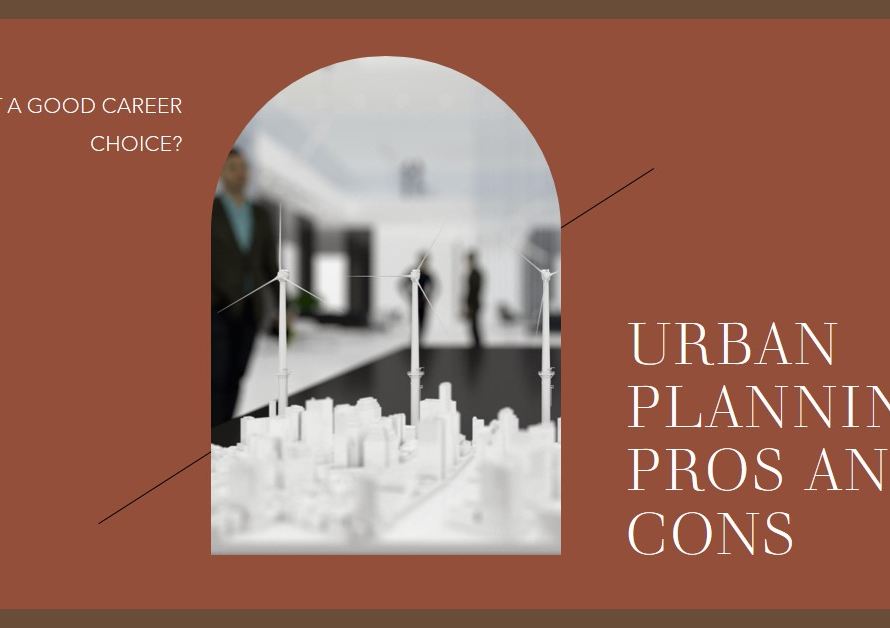
Table of Contents
What is the Golden Ratio?
The Golden Ratio, also known as the divine proportion or Phi (Φ), is a mathematical concept that has fascinated architects and artists for centuries. It is a ratio of approximately 1:1.618 and can be found in various natural and man-made structures, including architectural designs. This ratio is said to create an aesthetically pleasing balance and harmony that appeals to the human eye.
One of the intriguing aspects of the Golden Ratio is its presence in nature. From flowers, seashells, and hurricanes to our very own bodies, this proportion appears time and time again. It seems to be ingrained in the fabric of our universe. Architects have long recognized this correlation between nature’s design and their own creations by incorporating the Golden Ratio into their architectural designs.
Furthermore, beyond its aesthetic appeal, some believe that the Golden Ratio holds a deeper symbolic meaning. It has been associated with concepts such as perfection, beauty, and even spirituality. Leonardo da Vinci himself saw significance in this ratio when he used it extensively in his famous artwork, such as The Vitruvian Man which depicts perfect human proportions based on Phi.
In conclusion, there is something undeniably captivating about the Golden Ratio’s prevalence in both natural phenomena and artistic creations throughout history. Whether it be its inherent beauty or deeper symbolic connotations transcending cultures and disciplines alike, this mathematical concept continues to inspire architects worldwide- serving not only as a foundational principle but also as a source of creative exploration within architecture itself
History of the Golden Ratio in Architecture
One of the earliest instances of the Golden Ratio in architecture can be traced back to ancient Greece, where it was used extensively in the design and construction of their buildings. The Parthenon, one of the most iconic examples of Greek architecture, is said to have been built using this ratio. Its dimensions are said to adhere closely to the principles of harmonic proportions, creating a sense of balance and harmony that is both pleasing to the eye and spiritually uplifting.
Moving forward in history, we see the influence of the Golden Ratio in other architectural masterpieces as well. In Renaissance Italy, architects like Leonardo da Vinci and Sebastiano Serlio embraced this mathematical principle in their designs. For example, Leonardo’s Vitruvian Man incorporates both geometric elements and elements based on ratios found in nature, further highlighting his fascination with harmonious proportions.
Beyond individual buildings, the Golden Ratio has also played a significant role in urban planning throughout history. Cities like Rome and Florence were laid out using grids that were designed with this ratio in mind. By employing such principles at a larger scale, architects aimed to create cities that not only functioned efficiently but also exhibited an inherent aesthetic beauty that resonated with their citizens.
In conclusion, across different time periods and cultures, architects have recognized and utilized the Golden Ratio as a fundamental design principle. This remarkable mathematical concept continues to shape our built environment by providing a framework for creating visually appealing structures that evoke a sense of harmony and balance. From ancient Greece to modern-day architecture, this enduring relationship
The Mathematical Concept of the Golden Ratio
The Golden Ratio is a mathematical concept that has fascinated mathematicians, artists, and architects for centuries. It is an irrational number approximately equal to 1.6180339887. What makes the Golden Ratio so intriguing is its appearance in various natural and man-made forms, from the shape of seashells and flowers to the proportions of famous artworks like Leonardo da Vinci’s Mona Lisa.
In architecture, the Golden Ratio has been used to create harmonious and visually appealing designs. Many famous structures, such as the Parthenon in Athens and the Great Pyramid of Giza, are said to incorporate this ratio in their dimensions. The idea behind utilizing the Golden Ratio in architecture is to create a sense of balance and aesthetic perfection that resonates with viewers on a subconscious level.
While some argue that adherence to the Golden Ratio can lead to predictable and formulaic designs, others believe it provides a timeless framework for creating buildings that stand out as truly magnificent works of art. By incorporating this mathematical concept into architectural design, architects can tap into something deeper than just aesthetics – they can invoke an innate sense of beauty within those who experience their creations. Whether one chooses to follow it strictly or use it simply as inspiration, there’s no denying that the mathematical magic behind the Golden Ratio continues to captivate architects around the world today
Application of the Golden Ratio in Architectural Design
The application of the Golden Ratio in architectural design extends beyond mere aesthetics; it is a powerful tool that creates harmonious and visually appealing spaces. One area where the Golden Ratio is commonly used is in determining the proportions of windows. Architects often utilize this ratio to determine the height, width, and spacing between windows, resulting in a balanced and pleasing façade.
In addition to windows, the Golden Ratio also influences other architectural elements such as columns. By using this ratio to determine their dimensions, architects are able to create visually appealing structures that exude elegance and proportionality. The use of the Golden Ratio can give buildings a sense of timelessness by creating designs that please our innate sense of beauty and balance.
Furthermore, the application of the Golden Ratio goes beyond individual elements; it plays a crucial role in shaping entire floor plans. Architects harness its power by using proportional relationships based on this ratio when creating layouts for buildings. This results in spaces that feel balanced while maximizing functionality. From residential homes to large commercial complexes, applying the principles of the Golden Ratio ensures that every space flows naturally and optimally for its intended purpose.
Overall, integrating the Golden Ratio into architectural design not only provides visual appeal but also creates spaces that are inherently harmonious and functional. It serves as a guiding principle for architects seeking to create timeless structures that resonate with their occupants on an emotional level. Whether you realize it or not, chances are you encounter examples of buildings designed using this ancient mathematical concept every day – proof that there truly is beauty
Famous Examples of the Golden Ratio in Architecture
One prominent example of the Golden Ratio in architecture is found in the design of the Parthenon in Athens, Greece. Built in the fifth century BCE, this iconic temple perfectly embodies the principles of balance and harmony that define the Golden Ratio. From the ratio of its columns to its overall proportions, every aspect of the Parthenon reflects a deep understanding and implementation of this mathematical concept.
Another renowned example is Le Corbusier’s Villa Savoye located just outside Paris, France. Completed in 1931, this modernist masterpiece showcases an elegant utilization of the Golden Ratio through its strict adherence to geometric forms and proportions. The villa’s horizontal windows are set according to these ratios, resulting in a perfectly balanced façade that captivates visitors with its sense of order and tranquility.
These famous examples illustrate how architects throughout history have drawn upon the timeless principles embodied by the Golden Ratio to create visually striking and harmonious buildings. Whether it’s ancient temples or modernist villas, there is an inherent beauty that arises from utilizing this mathematical concept in architecture – a beauty that continues to inspire designers today.
Criticisms and Controversies Surrounding the Golden Ratio
One criticism surrounding the golden ratio is that it is often seen as an overly simplistic and rigid approach to design. Critics argue that relying too heavily on this ratio can limit creativity in architecture, leading to repetitive and formulaic designs. They argue that truly innovative and groundbreaking designs should not be constrained by a strict mathematical ratio but rather should embrace a more fluid and organic approach.
Another controversy surrounding the golden ratio is its historical context and cultural implications. Critics have pointed out that the widespread belief in the inherent beauty and harmony of this ratio can be traced back to ancient Greek ideals of perfection, which may not necessarily align with the diverse range of aesthetic preferences found in contemporary society. Some argue that promoting the golden ratio as a universal standard for beauty neglects and dismisses other cultural concepts of aesthetics, potentially perpetuating Eurocentric biases in design practices.
The criticisms and controversies surrounding the golden ratio bring into question its role as an absolute standard for beauty in architecture. While it undeniably has its merits, it also faces valid critiques regarding its potential limitations on creative expression and its exclusionary nature from diverse aesthetic traditions. Considering these perspectives encourages architects to think critically about their design choices, considering multiple approaches instead of simply adhering to a single mathematical concept. Ultimately, this debate compels us to expand our understanding of what constitutes beautiful architectural compositions beyond just mathematical formulas.
Conclusion: The Enduring Influence of the Golden Ratio in Architecture
The enduring influence of the Golden Ratio in architecture cannot be overstated. Despite being a concept that originated over 2,000 years ago, it continues to shape and inform architectural design in the present day. One reason for its longevity is its innate ability to create harmony and balance within architectural compositions. The Golden Ratio’s mathematical precision ensures that proportions are aesthetically pleasing to the human eye, evoking a sense of natural beauty and order.
However, the influence of the Golden Ratio goes beyond mere aesthetics. It also plays a crucial role in creating functional spaces that engage and serve their occupants effectively. Architects often employ this ratio when designing buildings with specific purposes in mind, such as museums or cathedrals. By utilizing the principles of the Golden Ratio, these architects are able to create spaces that inspire creativity, introspection, or spirituality – all while remaining visually stunning.
Moreover, what makes the Golden Ratio even more captivating is how it transcends cultural barriers and resonates with people across different societies and time periods. From ancient civilizations like Egypt and Greece to modern-day architects worldwide, many have recognized its power in creating spatial harmony. Its enduring appeal lies not only in its visual appeal but also in its universal appeal – a testament to humanity’s collective desire for beauty and order. As long as architecture exists as an art form aimed at shaping our physical environment into awe-inspiring structures that stand the test of time, there will always be room for the golden ratio’s everlasting influence.


